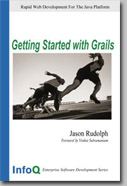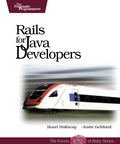Building a Better Maven with Ant
It looks like the Ant folks are thinking of building a better Maven.
I see many developers adopt Maven because they want a build system able to
provide common features with no effort. Most of them don't want to spend
much time writing an Ant script, or have seen or heard that maintaining Ant
build scripts is troublesome. So they choose to use Maven only because it's
easy to use for common use cases: install, write a simple pom of a few lines
or generate it using an archetype, and you're ready to compile, test and
package your new project following the Maven standard structure. They also
get dependency management for free, and with only a few more effort they
have multi module builds, and some nice features like code analysis,
coverage, and a set of report gathered in a web site. That's really nice and
that's what I like about Maven.
But Maven suffers from a lack of flexibility and robustness IMHO. And later
the same people who first adopted Maven because of its perceived ease of use
become frustrated when they need to tweek the system to their own needs or
don't understand how the release plugin work. Then some of them go back to
Ant, first having to go through a sometimes painful road to describe their
whole build system in xml, especially if they aren't Ant experts. Others try
to use new build tools like raven, buildr or others.
I really like Ant, and think it is a very good basis for robust and flexible
build systems. People with enough knowledge of Ant can write very good build
systems, testable, maintainable and adaptable. But you need to get your
hands dirty, and you need to get a good knowledge of some of the mechanisms
which can make an Ant based build system manageable: import, scripts and
scriptdef, macrodef, presetdef, and so on. [Read More]
What do you think - is this a good idea?
I agree that Maven has its warts, but I don't think it's that bad. I've also heard that Maven has been successfully implemented at large companyies like eBay, Intuit and E*Trade[1]. Is the "Maven sucks" meme largely something that exists in the blogosphere, but not in the real world?
I think the biggest benefit of Maven is dependency management. I think it makes your code more modular and easier to build. Rather than having a monolithic source-code tree that depends on itself being built in a certain order, you can have individual modules that pull dependencies from a central location. This can be done with Maven's Ant Tasks as well. I don't see a problem with building a better Maven with Ant, but to try and build a better Central Repository sounds like a nightmare to me. The current repository has been improved for years and is much better than it was a couple years ago. That being said, I would love to see somebody build a more accurate Central Repository. Ideally, it'd be done sometime next week. 
[1] I could be wrong about these companies. If you're a developer at one of these companies, please confirm or deny. Any comments on Maven's success at these companies would be great as well.
Update: Speaking of Maven, there's an interesting comment on a Javalobby post I wrote:
With all the critical remarks the Maven project is receiving, wouldn't it be time for some Maven project lead to step up and explain the team's position? Or is it completely deaf to the sentiments? How many builds have to fail, how much more headaches are needed before others start their own version of Maven and do it the right way (like Don [Brown])?
Seems like an excellent question to me. Guys?





 . Below is an example Hello World application.
. Below is an example Hello World application.